
Grand Canyon National Park

Looking into the Grand Canyon from the North Rim
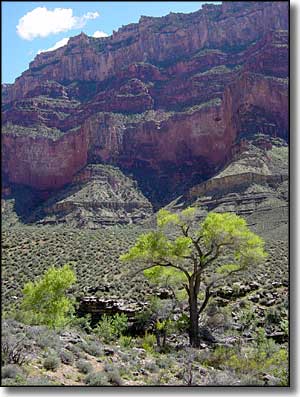
The Grand Canyon is often billed as "the most awe-inspiring natural feature on Earth." In the summer time it's also usually overcrowded with a severe shortage of parking. And once you find a parking spot, you're at the mercy of the free shuttle buses to get to most places that people want to go to.
90% of the visitors to Grand Canyon National Park flock to the South Rim, which is open year-round. The North Rim is only open from mid-May to mid-October (but day-use is allowed up to maybe the end of November, depending on the weather and how much snow might be on the road).
If you are intent on spending more than a day at the Grand Canyon, you want to make your reservations as soon as possible. The campgrounds and lodges tend to be booked up months in advance. The same goes for mule rides, backcountry hikes and river trips (although things on the North Rim aren't nearly as busy as they are on the South Rim). This is a world-renowned natural resource and it attracts a lot of people (4.5 to 5 million annually), with the heaviest traffic happening between May and September.
Elevations along the South Rim average 7,000' while elevations along the North Rim average 8,000'. The two rims are only 10 miles apart (as the crow flies) but it's 215 miles by road from one side to the other. The North Rim also tends to be about 10°F cooler than the South Rim, while the bottom of the canyon tends to be 30°F warmer than the South Rim (the bottom of the canyon is also about a mile lower than the South Rim, something to think about if you decide to take a hike down into the canyon...)

Another shot above Bright Angel Canyon from the North Rim
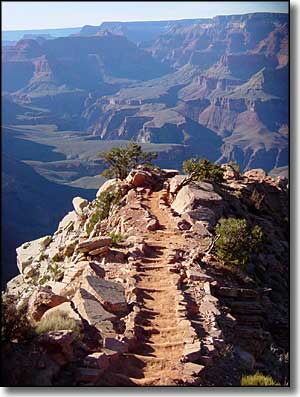
For most folks driving in from the south, the first real view of the canyon comes at Mather Point, the first rim overlook on the South Entrance Road. There is parking nearby and the Canyon View Information Plaza (with a bookstore, visitor center and restrooms) is a short walk away. Just west of there is Yavapai Point, another great overlook. Next to that is the Yavapai Observation Station with another bookstore, geology displays and great views looking down on the Colorado River. These are very popular stops in Grand Canyon Village. This area and the 8-mile road to Hermit's Rest are best reached by taking advantage of the free shuttle buses. Along the way to Hermit's Rest there are several good pullouts and overlooks. The Rim Trail is a hiking trail (with great views along the way) that connects Hermit's Rest with Yaki Point. If you get tired along the way, just find the nearest shuttle stop...
If you want to get away from the crowds, head east on the 25-mile drive to Desert View. Along the way there are numerous excellent pullouts and viewpoints. The Watchtower is at Desert View and it offers some incredible views of the canyon and of the Colorado River, from the highest vantage point on the South Rim. Desert View also offers a bookstore and information station, restrooms, general store, gift shop, campground and seasonal gas station. A few miles west of Desert View is the ruin at Tusayan, a small ancestral Puebloan village that was abandoned more than 800 years ago.

North Rim view again
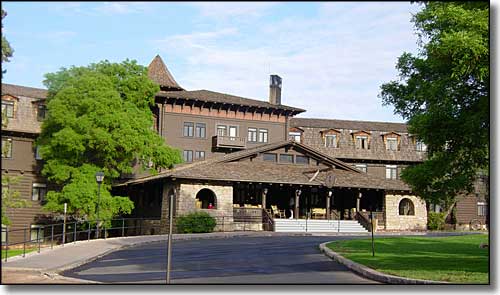
The Lodge on the South Rim
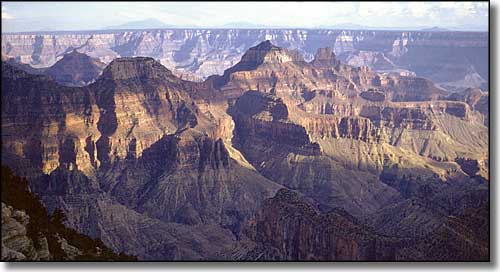
A view from the South Rim
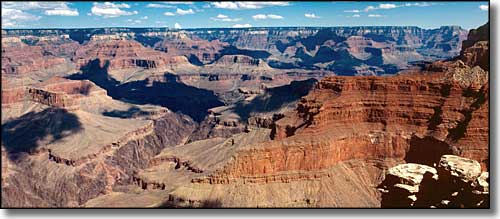
Another view from the South Rim
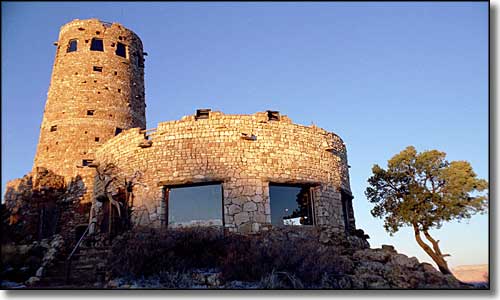
The Watchtower at Desert View
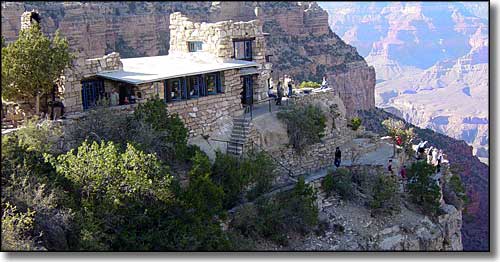
Yavapai Point
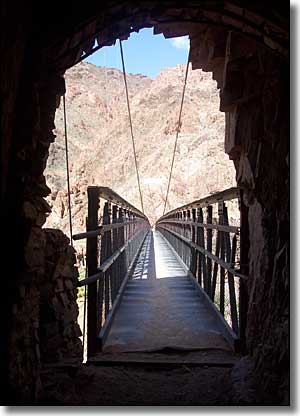
Somewhere above I said the North Rim is about 215 miles from the South Rim by car, but only 10 miles away as the crow flies. You can take a very strenuous 21-mile, 2-3 day cross-canyon hike, too (along the way you'll cross the suspension bridge over the Colorado River in the picture to the left). You can take the hike one way and then ride the Trans Canyon Shuttle back to the South Rim.
The North Rim offers a visitor center, interpretive programs, the Grand Canyon Lodge (usually booked up well in advance) and a campground (you'll want to make reservations). These facilities are only open between mid-May and mid-October. In season there are also half- and one-day mule trips available into the canyon, but they don't go all the way to the river. The mule trips from the South Rim include one-day and two-day (with an overnight at the Phantom Ranch, also across the bridge shown to the left). You'll also want to book mule trips well in advance.
For all camping below the rim or in undeveloped areas on the rim you'll need a permit from the Backcountry Information Center. You'll also want to get these permits well in advance.
Day hikes below the rim don't require a permit but they do require preparation. The Bright Angel, South Kaibab and North Kaibab Trails are the most popular. They are well maintained and easy to follow, but also very steep with lots of switchbacks. Plan to spend about 1/3 of your time in the hike down and 2/3 of your time in the hike back up. You'll also want suitable clothing, good sunscreen, a hat, excellent footwear, a gallon of water and some salty snacks... There are other trails into the canyon but they are not maintained, not as easy to follow and are recommended only for more experienced hikers.
Then there's the commercial whitewater rafting tours...
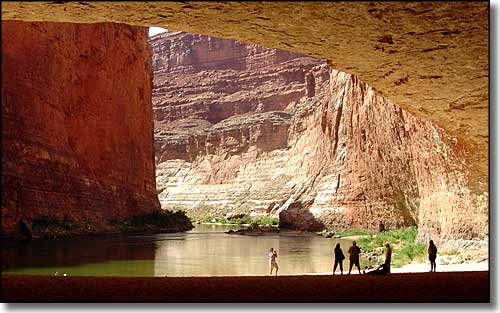
Deep in the bottom of the canyon
